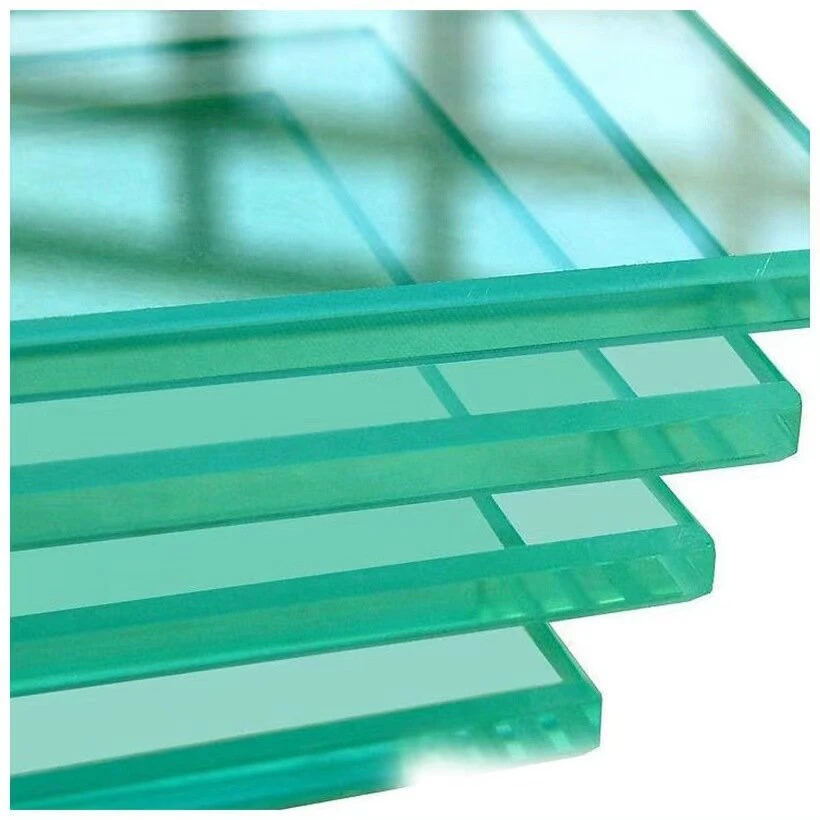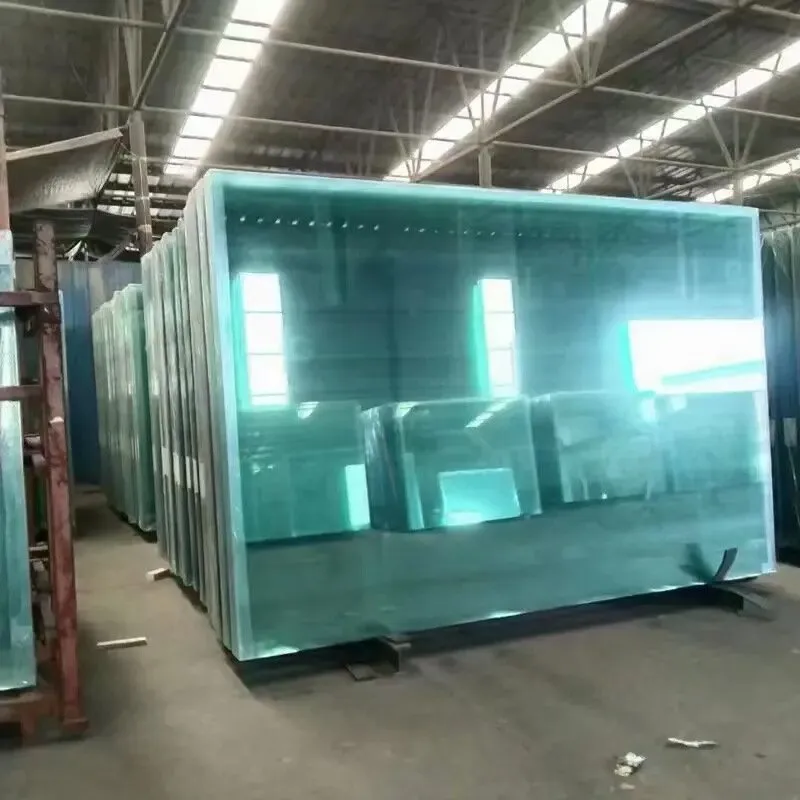Laminated and tempered glass have become pivotal materials in modern architecture and design, employed ubiquitously from automotive industries to skyscraper construction. These materials are not just about aesthetics; they promise safety, durability, and enhanced functionality, making them a prime choice for industry professionals.

Laminated glass, composed of two or more glass layers bonded with an interlayer, usually of polyvinyl butyral (PVB), is renowned for its impact resistance. In automotive windshields, laminated glass ensures that, in the event of a collision, the glass does not shatter into jagged shards but stays adhered to the interlayer, thereby reducing injury risks. Moreover, this type of glass provides excellent acoustic insulation, making it ideal for use in environments where noise reduction is paramount, such as recording studios and urban residential buildings.
Beyond safety, its UV filtering properties protect interiors from fading and degradation, a quality that renders it indispensable for preserving artifacts in museums or maintaining the vibrancy of a retail space's interiors. Its versatility allows it to be used in creative applications, such as security glazing, where added materials like polycarbonate layers offer increased resistance to ballistic impacts.

Tempered glass, on the other hand, is distinguished by its manufacturing process, which involves heating the glass to over 600 degrees Celsius and then rapidly cooling it. This treatment not only increases its tensile strength but also alters its fracture pattern. Should tempered glass break, it disintegrates into small, blunt granules, minimizing injury risks. This exfoliating quality is invaluable in environments prone to high impact, such as gymnasiums or public transportation terminals. Additionally, tempered glass's robust nature suits it for applications requiring durability, such as in building facades where wind pressure and thermal stresses are prevalent.
Tempered glass also stands out with its high thermal shock resistance, making it ideal for environments subjected to rapid temperature changes. This is why it is commonly used in oven doors, shower doors,
and exterior sliding doors. Its strength allows it to be produced in thinner iterations, offering a lighter solution without compromising durability—key for innovative architectural designs that might demand a subtler touch.
laminated and tempered glass
The merging of these two technologies comes in the form of laminated tempered glass, a superior product that embodies the strengths of both the sound and UV protective features of laminated glass combined with the enhanced strength and safety characteristics of tempered glass. This coupling finds its niche in high-security environments, providing unparalleled protection without sacrificing optical clarity or design flexibility.
For architects, designers, and builders, understanding the nuanced benefits of laminated and tempered glass is essential. The evidence of their efficacy can be seen in numerous projects globally, from hurricane-prone regions requiring impact-resistant solutions to metropolitan centers where acoustic insulation enhances inhabitant quality of life.
Choosing between laminated and tempered glass—or a hybrid option—should consider factors such as load-bearing requirements, thermal stress tolerances, safety criterion, and budget constraints. Consultations with glass manufacturers or specialists can provide insight into the best choice tailored to specific project needs. Investing in these robust materials echoes a commitment to safety, innovation, and sustainable practices.
In conclusion, laminated and tempered glass are not simply building materials but are crucial components in the evolution of safer, more resilient, and aesthetically pleasing architectural solutions. As technology advances, the potential applications and benefits of these types of glass will undoubtedly expand, continually setting new benchmarks in both innovation and sustainability. Trust in the longstanding expertise and continued advancement of glass technologies to enhance the structural integrity and visual appeal of future projects.
 Afrikaans
Afrikaans  Albanian
Albanian  Amharic
Amharic  Arabic
Arabic  Armenian
Armenian  Azerbaijani
Azerbaijani  Basque
Basque  Belarusian
Belarusian  Bengali
Bengali  Bosnian
Bosnian  Bulgarian
Bulgarian  Catalan
Catalan  Cebuano
Cebuano  Corsican
Corsican  Croatian
Croatian  Czech
Czech  Danish
Danish  Dutch
Dutch  English
English  Esperanto
Esperanto  Estonian
Estonian  Finnish
Finnish  French
French  Frisian
Frisian  Galician
Galician  Georgian
Georgian  German
German  Greek
Greek  Gujarati
Gujarati  Haitian Creole
Haitian Creole  hausa
hausa  hawaiian
hawaiian  Hebrew
Hebrew  Hindi
Hindi  Miao
Miao  Hungarian
Hungarian  Icelandic
Icelandic  igbo
igbo  Indonesian
Indonesian  irish
irish  Italian
Italian  Japanese
Japanese  Javanese
Javanese  Kannada
Kannada  kazakh
kazakh  Khmer
Khmer  Rwandese
Rwandese  Korean
Korean  Kurdish
Kurdish  Kyrgyz
Kyrgyz  Lao
Lao  Latin
Latin  Latvian
Latvian  Lithuanian
Lithuanian  Luxembourgish
Luxembourgish  Macedonian
Macedonian  Malgashi
Malgashi  Malay
Malay  Malayalam
Malayalam  Maltese
Maltese  Maori
Maori  Marathi
Marathi  Mongolian
Mongolian  Myanmar
Myanmar  Nepali
Nepali  Norwegian
Norwegian  Norwegian
Norwegian  Occitan
Occitan  Pashto
Pashto  Persian
Persian  Polish
Polish  Portuguese
Portuguese  Punjabi
Punjabi  Romanian
Romanian  Russian
Russian  Samoan
Samoan  Scottish Gaelic
Scottish Gaelic  Serbian
Serbian  Sesotho
Sesotho  Shona
Shona  Sindhi
Sindhi  Sinhala
Sinhala  Slovak
Slovak  Slovenian
Slovenian  Somali
Somali  Spanish
Spanish  Sundanese
Sundanese  Swahili
Swahili  Swedish
Swedish  Tagalog
Tagalog  Tajik
Tajik  Tamil
Tamil  Tatar
Tatar  Telugu
Telugu  Thai
Thai  Turkish
Turkish  Turkmen
Turkmen  Ukrainian
Ukrainian  Urdu
Urdu  Uighur
Uighur  Uzbek
Uzbek  Vietnamese
Vietnamese  Welsh
Welsh  Bantu
Bantu  Yiddish
Yiddish  Yoruba
Yoruba  Zulu
Zulu 


